After a near calamitous reversal in the movement’s fortunes, co-operatives are booming. What’s behind the turnaround?
It’s not just the discounters that are thriving in these challenging times. Sales at the Co-operative Group rose 14% to £10.2bn in its latest financial year (to 5 January), it revealed earlier this month.
The “game-changer” was the milestone acquisition of Nisa in May 2018, said CEO Steve Murrells, but with like-for-like sales up 4%, it also recorded its strongest food sales performance for seven years, while underlying operating profits increased 12% to £204m.
It’s not the only UK co-operative impressing right now, though. Sales across its smaller siblings have also been strong, up 5.2% at the next 10 biggest food and drink co-operatives, while their profits were up 9.9%, analysis by The Grocer shows. And it’s been accompanied, in a two-year period from 2016 to 2018, by a 12% increase in membership to 13.1 million, according to Co-operatives UK.
As a result, the movement is once again a force to be reckoned with, says Kevin Hunt, MD of Spar retail chain Lawrence Hunt. “It’s quite evident people are shopping more at the discounters, but our biggest competitors are the various Co-ops. They are getting good sites in prime positions and have a very good offer.”
It’s a remarkable turnaround. The various societies had struggled for years to keep up with the highly capitalised growth of the big four. And then came the annus horribilis, 2013, when the public humiliation and near-meltdown at the Co-op Group threatened the existence of the entire movement, due to the society’s pivotal supply chain role.
So what’s behind the resurgence? And how sustainable is it?
Since 2013 there has been a lot of hard work behind the scenes, most notably at the Co-op, with the disposal of the toxic bank but also profitable assets such as the pharmacy business (to Bestway), and the sale of sites, to shore up its finances and refine its proposition. What’s also helped is a focus on playing to its strengths. In the first instance that’s meant focusing on convenience food retailing. It’s coincided with a shift in the way consumers shop, believes Alan Treadgold, retail expert at PA Consulting, with the co-operative model’s typically smaller format stores dovetailing nicely with a “trend towards convenience” in grocery.
While the Co-op has stated that it wants to be the number one player in convenience, it’s not been a case of convenience at any cost, however: in 2016, it sold 300 stores to McColl’s that were too small to sufficiently showcase the breadth of its range.
Another strength it’s playing to is its values. Embedded within the co-operative movement, ethics and transparency resonate strongly with modern shoppers, particularly millennials and so-called ‘generation Z’.
To rebuild faith in its values, the Co-op has “listened to what our members and customers care about,” says Co-op Food CEO Jo Whitfield, “which drives the Co-op difference through ethical sourcing, sustainability, our unrivalled support for British farmers and our continued commitment to Fairtrade”.
“The rescue of the Co-op was based on strong commercial foundations,” she adds. “Get this right and the business can do more good.”
As part of the Co-op reset, in 2016, it also introduced a new loyalty-based scheme that earns members who buy its own-label products a 5% reward, but also donates 1% to charities.
With £60m paid out last year, and £157m to date, Murrells suggested earlier this month that the return of the ‘divi’ (which was last paid out in 2014) was no longer necessary as it was focused on “making sure we are building a modern successful Co-op for the future and more and more on how we can help society”.
Double the difference
While the Co-op has been particularly proactive in promoting this ‘co-operative advantage’, the principle of giving back to communities is by no means unique to the Manchester-based society.
The Co-operative Economy report points out that all retail societies give their members ‘a chance to consume in a way that is good for people and planet’. In 2017, they collectively distributed almost 12% (more than £5.7m) of their profits back to local communities. Major supermarket rivals, meanwhile, gave back a mere 6% of their profits.
Southern Co-operative chief executive Mark Smith says an essential part of its long-term approach is a “fundamental commitment to operating on a sustainable basis”.
It is an “active member” of Business in the Community - the Prince of Wales’ Responsible Business Network, he adds. “As part of this, we have been promoting the need for all of us to support the global sustainability agenda.”
“Consumers are interested in ethical retailers; in Fairtrade; in buying local products”
Co-operatives UK secretary general Ed Mayo insists it is “absolutely clear” that co-op retailers do more for their communities than conventional retailers. “As values-based businesses they give more back to the communities in which they operate. These values run right the way through the business - not just the bits the public might see.
“Consumers are buying into this more and more,” he adds. “They’re interested in ethical retailers; in Fairtrade; in buying local products.”
“The values [the co-ops promote] are about being part of a community, being supportive of communities and suppliers, doing the right thing in terms of sustainability, operating at a local level, participation,” says Treadgold. “There’s a sense that when you’re shopping at the co-op, you’re doing something good - as well as getting a good offer that you can benefit from.”
The Co-op Group has delivered five consecutive years of like-for-like growth in food off the back of this combination. Whitfield attributes its success to getting closer to its customers and delivering what they want, with “great-quality products and services, good-value pricing, strong promotions and increased availability”.
However, she adds, “we’ve also listened to what our members and customers care about, which drives the Co-op difference through ethical sourcing, sustainability, our unrivalled support of British farmers and our continued commitment to Fairtrade”.
Collaboration
Crucially, the improvements in the offer at the Co-op have also helped the movement as a whole. That’s thanks to another strength of the model: the collaboration that permeates all levels of a co-operative business, from collective decision-making to procurement among grocery co-operatives, both internally and externally.
Phil Ponsonby, CEO of The Midcounties Co-operative, believes the model has rebounded in grocery in recent years because there is more clarity around strategy than at traditional businesses. And this is, in part, down to the way they collaborate via the Federal Retail Trade & Services group (FRTS) - the central buying group for co-operative retail societies.
The FRTS is operated by the main Co-op Group, and pools the collective buying power for the 18 UK co-operative societies, which allows them to negotiate better prices from suppliers. Working within the FRTS means co-ops have shared objectives, says Ponsonby.
“Obviously we can’t share strategy in detail because of CMA rules - co-ops are competing with each other - but in terms of things like buying volumes, decisions such as bringing Nisa into the buying group - these are all strategic moves that are strengthening the co-op.”
“When we say we’re putting our customers first, we’re also putting our owners first - they are one and the same”
Smith adds that, through this national co-operative joint buying venture, Southern Co-op sales are benefiting from the “excellent enhancements to Co-op own brand products that the FRTS food team is developing”.
That customers and owners of a co-operative business are often one and the same also means decisions are more consensual, collaborative and in the longer-term interests of the business.
Fundamentally, Ponsonby suggests, the model works well in grocery because of the alignment between the customers and owners of the business, which are one and the same. “If you think about most companies, they will say they put their customers first,” says Ponsonby. “But in reality, often they have to put their owners first, and their owners are either big shareholders, institutional shareholders, or private owners.
“What’s unique about the co-op is that our owners are our customers because they’re our members, who own us. So when we say we’re putting our customers first, we’re also putting our owners first - we’re not resting between serving the needs of our customers versus the needs of our owners, our shareholders - they are one and the same.”
Growing membership
This is driving an increase in membership numbers and engagement. According to the Co-operative Economy report, there were more than 700,000 new recruits last year, a 9% increase, taking membership levels close to 8.5 million across all customer-owned retail societies.
At Midcounties, membership has now surpassed 700,000. “We’re talking to our members much more as owners,” says Ponsonby. “So you’re not just a member who gets some sort of discount or loyalty scheme, you actually own the business and we want you to have a greater say in how it’s run. We’re doing a lot of work around that.”
The work it’s doing is so far paying off. In 2018 it received its highest-ever customer loyalty index score - 83 compared with 81 in 2017 - and its highest-ever colleague engagement score - 79, compared with 75. “The model is working and people are embracing it more than ever,” he adds.
Having its customers and owners as one allows a co-op to take a longer-term look at how it does business, too.
“Co-operatives like ours have a long history and all our decisions are taken with the long run in mind,” adds Smith. “We believe we have a positive impact on our communities and we want that to be the case in as many communities as possible.
“Therefore, whilst recognising there are fewer white space opportunities after several years of intensive growth across the sector, we will continue to seek growth opportunities in a highly competitive market - today, tomorrow and in the future.”
And though taking into account a wider set of interests undoubtedly comes with logistical challenges, it’s clear this approach to decision making is working.
Research by the Co-operative Economy revealed that new businesses set up as co-operatives are almost twice as likely to survive their few first years as other companies - 80% versus just 44%.
And the co-operative way of doing business is attracting a brand new generation too. There are now a number of smaller, more localised, often worker or community-owned co-operatives that have cropped up in grocery in recent years, including Unicorn in Manchester, Alston Wholefoods in Cumbria and the Green Valley Grocer in Slaithwaite, West Yorkshire (see below).
Jenny Carlyle, strategic HR officer at workers co-operative Suma Wholefoods, puts this largely down to the fact that co-ops “spread out” the risk and decision-making among a broader circle of people.
Of course it is also vital that the governance works. Dysfunctional governance was a real issue for the Co-op Group, one that was successfully resolved, as part of the initial rescue in 2014, with new articles of association introduced following the Myners report.
The next generation
Unicorn, Manchester
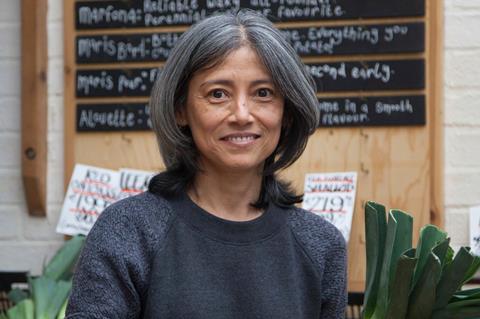
Unicorn is a workers’ co-operative whole foods grocery store based in Manchester, which claims to offer its customers an “unbeatable range of affordable, fresh and wholesome food with an emphasis on organic, Fairtrade and local produce”. “We’re the size of a supermarket but run as a workers’ co-operative - owned and democratically controlled by staff you see in the shop,” the store says. Unicorn was established in 1996 by a small group of people ‘committed to social change’.
Green Valley Grocer, Slaithwaite
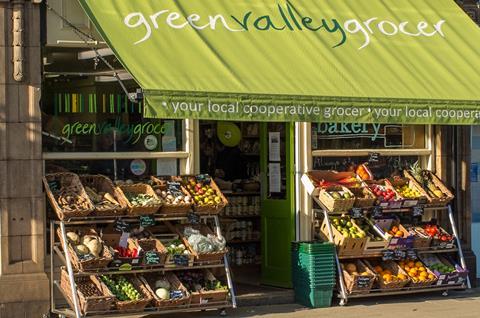
The Green Valley Grocer is a community-owned co-operative in Slaithwaite, West Yorkshire, which sells fresh fruit & vegetables, wet fish, artisan bread, whole foods, and a large range of cheeses and dairy products. In season, the store buys goods from local (within 30 miles) and ‘superlocal’ (within five miles) growers and producers. A small group of local residents bought the business in 2009 and have returned it to profitability, creating eight paid jobs. Around 850 customers visit the shop a week.
Rice Up, Southampton
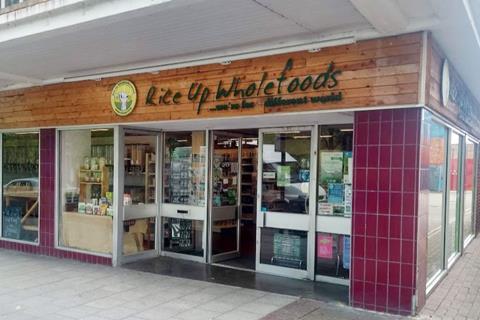
Rice Up is an independent whole foods grocery store, owned by workers, and specialising in vegan, zero-waste and gluten-free products. It opened in July 2013 stocking a range that includes organic fruit & vegetables, chilled and frozen products, dairy-free milks, loose whole foods, household goods, toiletries and cosmetics, petfood, chocolate and confectionery, fresh bread, and loose herbs and spices. It also has a fresh food counter serving cakes, salads and sandwiches.
Daily Bread, Northampton
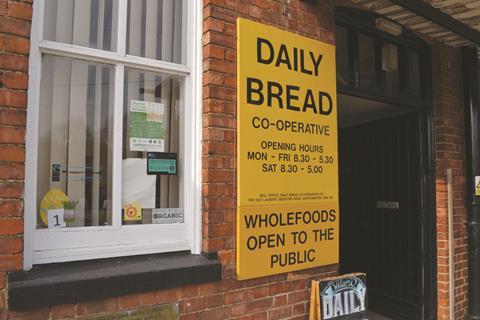
Daily Bread is a workers’ co-operative that originated from a church group in Northampton. The store opened in 1980 and is committed to providing “good, wholesome food at a fair price, avoiding the exploitation of others, including customers”. The store has a long-standing commitment to Fairtrade principles and products, and stocks as much organic and local produce as it can. It gives away a percentage of its turnover to causes outside the co-op, in particular educational projects in developing countries.
Future of the co-op
So what does the future of the co-operative movement look like? It’s in better shape than it’s been in for a number of years. “I’m positive about the future for co-operatives,” says Carlyle. “As long as people know that the model exists and understand that there are alternatives out there” to conventional business.
With the fundamentals sorted, the movement is better able to respond to the next generation as it demands more transparency and more influence over how the businesses where they shop are run, adds Ponsonby.
“Of course the co-op model provides that access like no other does, because for a pound you can become a member, put yourself up for the board of directors, get on the board, turn up to meetings/forums and influence policy.”
It isn’t a trend limited to the UK either. “I think people want to be able to do that, because they can see through brand positioning if it’s not genuine. Therefore, I think within the co-op they get access to the way things are run and how we do things. I think that will continue.”
Kellie Bubble, a member of the worker-owned co-operative Unicorn, claims worker co-ops continue to emerge all over the world as solutions to problems created by capitalist business models.
“They are a coming together of people to find a better way. We all know our global trading system has many flaws, often causing suffering to the most vulnerable, but there is hope in the bottom-up solutions co-ops offer,” she says. “The thriving co-operative economy in Rojava [Syria] is a great example of this.
“As food is a basic need it is fertile ground for collective solutions towards a more just system for people and the planet. At Unicorn we are certainly seeing greater interest from the younger generation in how we trade. The proportion of under 25-year-old customers has been growing much faster in recent years and this is heart-warming, we hope we can inspire some of them to set up their own worker food co-ops.”
Spreading the word
For the business model to grow further, or to influence business more broadly, will take more education though. However, Mayo warns there is “little appetite” to back the co-op model. Despite a support for their values “knowledge about co-ops and the many associated benefits is lacking”, he says.
“Look at professional services, the education system, local or central government. There are little pockets of support but by and large it’s not there. We’re working hard to redress the balance but it’s something which will take time and no little effort.
“That time and effort will be worth it though. If we want to see a more successful economy, where people have a say in decision-making and receive a fair share, then we need more co-operatives.”
As part of this awareness-raising, the Co-op Group is investing in ‘Co-op Academy’ schools in which it teaches students about co-operative values.
“We’re also encouraging other businesses and entrepreneurs to become co-operatives or social enterprises and we’re campaigning to protect our workers,” says Whitfield. “In today’s uncertain world this approach, co-operating to get things done, is more relevant than ever.”
Ponsonby argues that the model even needs to become part of the curriculum for all business schools and courses. “A lot don’t teach about the co-operative model,” he says. “They teach about the traditional ownership models - and I think that’s something that really needs to change.
“It’s disappointing, because it’s a great business model and I think it’s one that’s growing and therefore they should be embracing it and they should be teaching their business studies students about it. Some are, but most aren’t.”
Smith says that, overall, Southern is seeing responsible business issues resonate more with its members and other customers.
“We believe these concerns will increasingly influence consumer choice in the years ahead. In response we plan to continue to evolve what we mean by the co-op difference, but it is already very clear that rarely has there been a time when co-op values were more relevant or needed than today.”
One thing’s for sure: awareness of sustainability and the impact of businesses and individuals on the planet is only going to increase. If the co-operatives - community, customer and worker-owned alike - can continue to demonstrate how well they fit with these values, while still attending to the basics, their success looks set to continue.
The leading grocery co-operatives in the UK
Southern
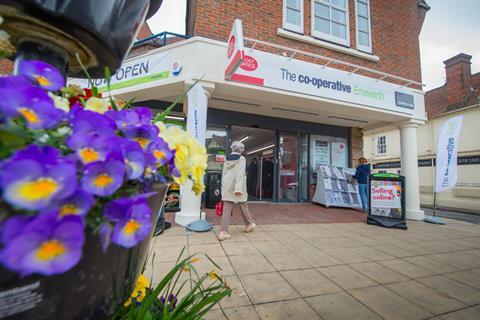
Founded: 1873
Members: 144,000
Stores: 221
Sales: £431.2m (+9.5%)
Profits: £2.4m (+4.3%)
Southern Co-op has stores in 11 counties in southern England. In 2018, it opened 16 new stores and set out its sustainability strategy, which included action to “end poverty and protect the planet”.
Midcounties
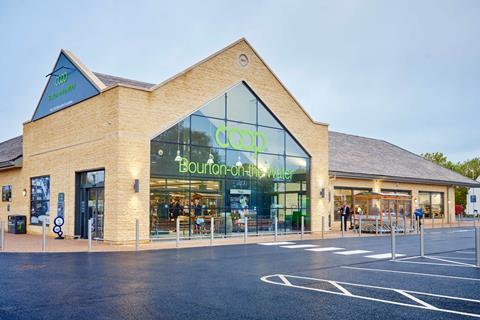
Founded: 2005 (1853)
Members: 700,000+
Stores: 301
Sales: £1.1bn (+12.3%)
Profits: £5.4m (+63.6%)
The largest indie consumer co-op, Midcounties trades across seven counties including Gloucestershire and Worcestershire. In January, it agreed a deal to purchase four Warner’s Budgens food stores.
Central England
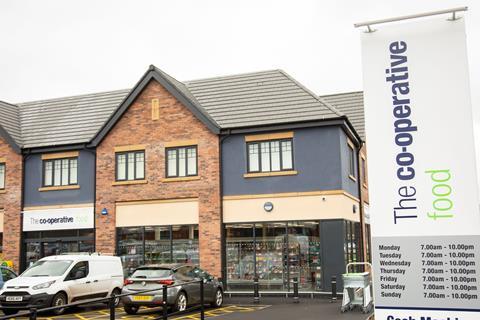
Founded: 2013 (1844)
Members: 330,000
Stores: 266
Sales: £827.8m (+2.3%)
Profits: £2m (-72.6%)
Central England trades across 16 counties from the Midlands to the east coast. In 2018, it opened 10 new food stores and refurbished a further 35. Its pre-tax profit was lower due to a one-off pension adjustment.
Scotmid
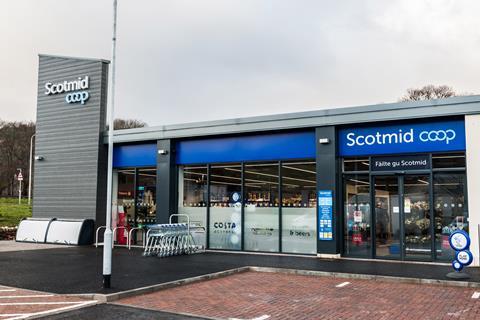
Founded: 1981 (1859)
Members: 155,343
Stores: 177
Sales: £377.9m (+1.2%)
Profits: £6.3m (+12.5%)
Scotmid Co-op operates across Scotland, Northern Ireland and Northern England. In 2018, the society built one new store and refurbished a further four to improve energy efficiency and refrigeration.
East of England
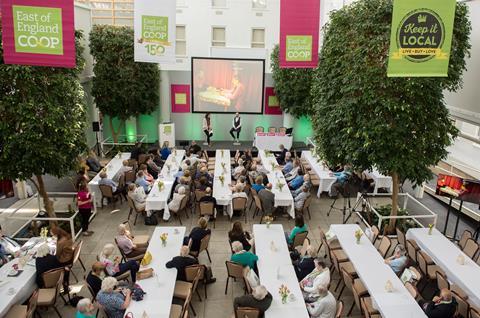
Founded: 2005 (1858)
Members: 280,000+
Stores: 122
Sales: £353.5m (-0.3%)
Profits: £2.6m (-18.8%)
East of England operates across Essex, Norfolk, Suffolk and Cambridgeshire. It invested £2.8m to refurbish its food stores in 2018. It said it would dispose of its 11 opticians and pharmacies.
Lincolnshire
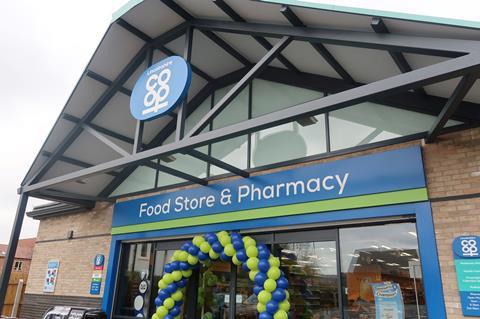
Founded: 1861
Members: 285,813
Stores: 221
Sales: £279.9m (+5.2%)
Profits: £328k (-98.6%)
Lincolnshire opened 10 new stores in 2018, including food stores, pharmacies and travel branches. It reported a lower pre-tax profit than the previous year due to a one-off pension adjustment.
Chelmsford Star
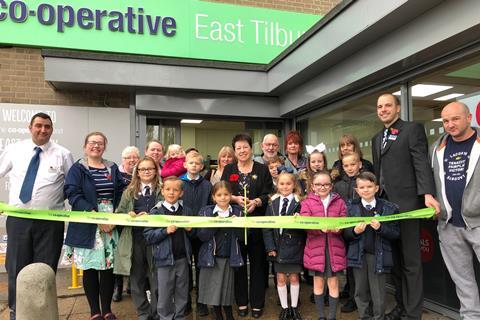
Founded: 1867
Members: 87,368
Stores: 40
Sales: £83.6m (+4.5%)
Profits: £139.6k (-34.3%)
Chelmsford Star trades across Essex. In 2017, the society acquired an additional c-store, located in Woodford Green. It also completed the refurbishment of eight stores.
Heart of England
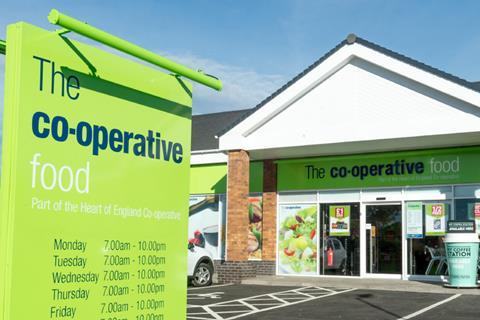
Founded: 2000 (1832)
Members: 137,500
Stores: 32
Sales: £74.2m (+3.5%)
Profits: £2.8m (-46.2%)
Heart of England serves Coventry, Warwickshire, south Leicestershire and Northamptonshire. In 2018, it refurbished two of its food stores. The society has plans to open three new stores in 2019/20.
Radstock
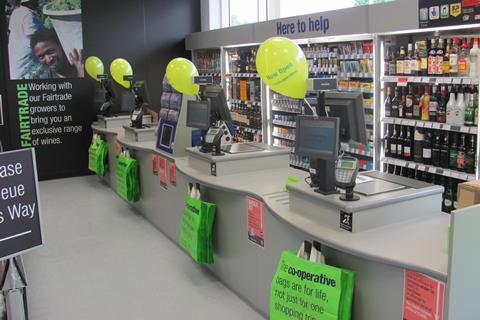
Founded: 1868
Members: 16,493
Stores: 20
Sales: £48.2m (+13.7%)
Profits: £1m (+277%)
Radstock opened three new stores and retrofitted a number of existing stores in 2017. The biggest of these was its Glastonbury outlet, where it installed a full in-store bakery.
Tamworth
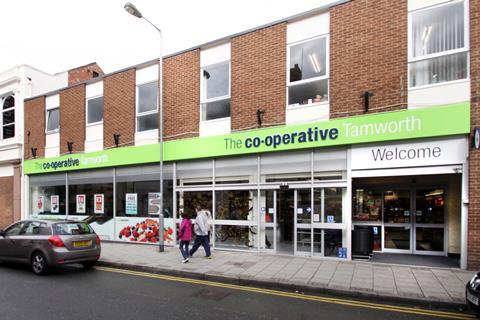
Founded: 1886
Members: 19,829
Stores: 12
Sales: £22.2m (+0.5%)
Profits: £800k (+12%)
Tamworth owns stores in areas including Rosliston, Stretton and Polesworth. The society started a major overhaul of its Kingsbury convenience store in 2017/18.







![GettyImages-540864510 [Converted]_0001](https://dmrqkbkq8el9i.cloudfront.net/Pictures/480x270/9/8/1/159981_gettyimages540864510converted_0001_632451_crop.jpg)
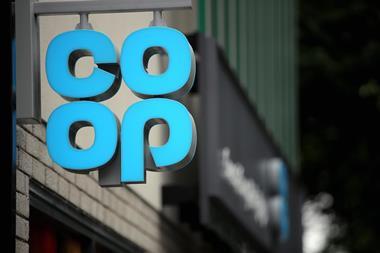



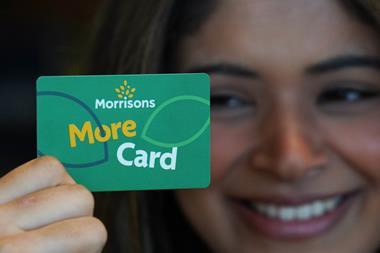
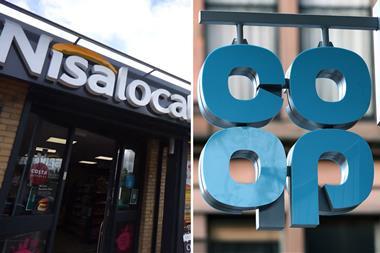






No comments yet